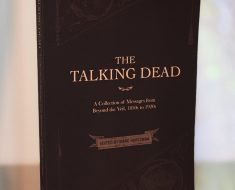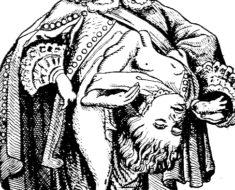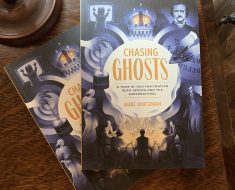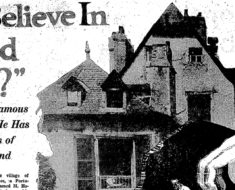If Hereward Carrington’s beliefs in spiritualism were correct, he’d be chatting it up with psychics from the afterlife right now. As a member of the American Society for Psychical Research, Carrington spent his life researching paranormal phenomena and writing books on the subject early in the 20th century.
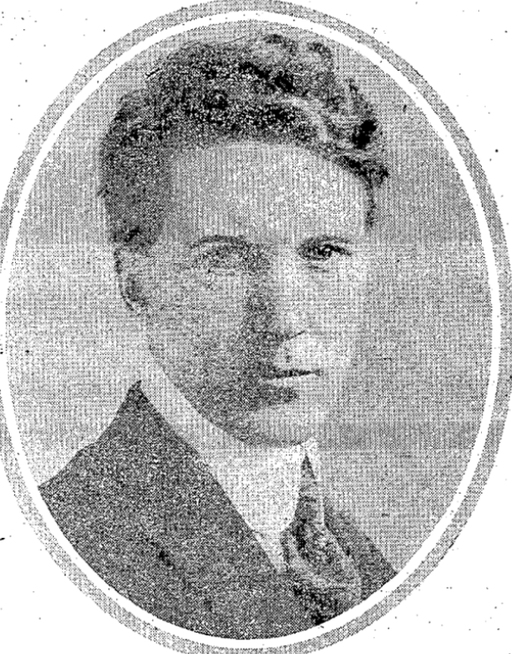
Hereward Carrington, from Delicate Devices of Inventors to Weigh Spirit Powers. Ogden Standard Examiner. January 7, 1921.
In 1920’s The Coming Science, Carrington explores numerous topics, from telepathy and hypnosis to spiritualism and haunted houses. Regarding the latter, Carrington offers four theories as to how a house may be haunted. It is the fourth option that he is most intrigued by. It’s a theory, he argues, that is explained by what he terms, “Post-Mortem Telepathic Hypnotism.”
The theory is based on an article by F.W.H. Myers, entitled, “Recognised Apparitions Occurring More Than a Year After Death.” This begins with the accepted belief in telepathy existing within the immaterial, psychic or spiritual world.
Myers, as Carrington explained, believed that telepathy was the means of communication between spirits “either embodied or disembodied, and that one may be embodied—that is, alive,—and the other may be disembodied—that is, dead—and yet telepathy be the means of communication between them.”
Carrington continues: “Thus we see that the spirit of the departed person (supposing it exists and retains its personal identity) may impress the subliminal consciousness of one still living with an imprint or impress of its individuality; and this thought may take form or become externalized as a visionary image or figure, constituting what is popularly known as a ‘ghost.’ It will thus be seen that haunted houses may really exist in so far as they actually do affect the persons residing in them, and that figures really are seen and voices heard, though they do not themselves have an external or actual existence.”
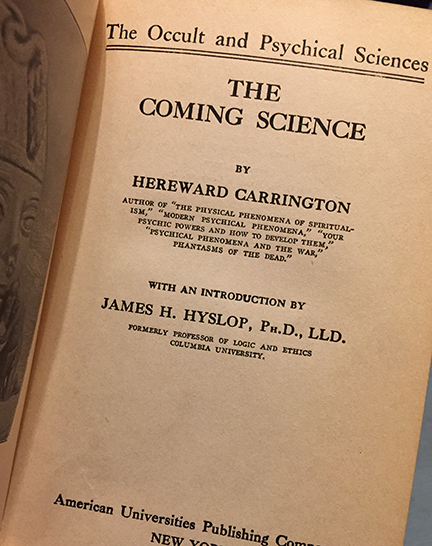
The Coming Science, by Hereward Carrington, features theories on haunted houses.
Now even if you’ve accepted telepathy and the existence of spirits as a way to explain haunted houses (and why not believe in haunted houses if you believe in those forces?), there is still more phenomenon to explain: the physical touch of a ghost. How does one account for spirits grabbing people’s hands?
Carrington has a simple answer:
“Now, we know that telepathy is a fact in nature—at least, most physical researchers believe it to be a fact. We know that thoughts and commands can be carried by this process from one mind to another, by other means than through the five senses. Such being the case, it is only natural to suppose that there might be such a thing as telepathic hypnotism in the world—i.e., hypnosis induced by telepathic means instead of by the spoken word.”
Here, Carrington is suggesting that ghosts can put the living under hypnosis in order to make them feel sensations or prevent certain movements. So if a hand feels restrained by a ghost, it’s “not by the fingers of some external phantom, but by a species of post-mortem telepathic hypnotism, which inhibits the action, just as the action would be inhibited by a spoken or telepathic suggestion from the living.”
So the next time you’re trapped in a haunted house and feel something spooky, just remember it’s probably nothing more than dead people trying to hypnotize you.

